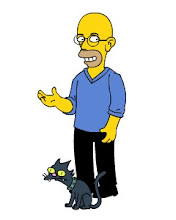A bit of a change of pace this time with a dip into the world of the literary phenomenon by way of The Girl with the Dragon Tattoo, the multi-million copy-selling crime novel by the Swedish, journalist-cum-novelist Stieg Larsson. So, is it, like The Da Vinci Code, just another over-hyped example of the paucity of mass market taste? Or does it live up to the word-of-mouth fanfare?
Mikael Blomkvist is stuffed. His latest corporate exposé of a corrupt industrialist has backfired, and ostensibly rock-solid evidence has melted in the courts and landed him a short term in prison, as well as threatened the future of the small, independent magazine he works for. But his mass media infamy has brought him to the attention of another industrialist, Henrik Vanger, with a decades-old mystery to solve. Taunted by the annual arrival of a floral memento, and compelled by his advancing years, Vanger offers Blomkvist the chance to save his employer from financial ruin by investigating the disappearance, and presumed murder, of his favourite niece, Harriet. Vanger also does some investigating of his own, hiring a hacker, Lisbeth Salander, the eponymous "girl with the dragon tattoo", to uncover the truth behind Blomkvist's imprisonment. But the obsessive Salander's interest in her assignment doesn't end when she files her report. Before long she too becomes involved in unravelling the fate of Harriet, and joins Blomkvist in an investigation that unearths a succession of unpleasant revelations about the Vanger clan and its past, and which exposes both to very present dangers.
Overall, a well-plotted and enjoyable thriller, marred slightly by an overly light touch on the part of Larsson's editor. The latter never comes close to derailing the novel, but it does make for some long-winded passages, redundant characters and occasionally purple prose (though the translator may bear some responsibility here). The strongest aspect of the novel is its central mystery, but Larsson does a good job of blending in Blomkvist's original investigation, as well as Salander's abused background. Larsson's writing is rather flat-footed at times, which isn't a huge surprise given this was his first novel, but even so his characters come alive much more convincingly than those of fellow best-selling authors like Michael Crichton, Dan Brown and (the horror) Jeffrey Archer.
Perhaps unsurprisingly given Larsson's real-life job as a campaigning journalist, the novel is not content spinning a yarn, and works in a more serious theme from modern Sweden. This is implied by both Salander's story and the resolution of Harriet's disappearance, but is brought front-and-centre by the statistics that are quoted at the head of each chapter. These document the abuse by men that Swedish women are at the receiving end of, and the resulting second-class status that women occupy. The engagement of such a crowd-pleasing novel with this more stark message is pleasing, although the message is something of a surprise given the wide perception of Sweden as a modern, liberal nation. Reading of Sweden's problems certainly raises suspicions that one's own country isn't quite as egalitarian as hitherto believed.
As I've also seen the film, it's interesting to make comparisons. Normally, the transition from page to screen is a series of compromises that preserves only the events and not the content of a novel, with the result that film adaptations are typically met by outrage from fans of the book. However, in this case, I think that fans of the film might well greet the novel with brickbats. In adapting the book, the film-makers have given it the trim that it really needed from its editor. Extraneous detail, particularly that concerning characters we don't need to know about, is removed, and the film is a far leaner thriller that simply works better for my money. The film-makers also tell the story much more from Blomkvist's perspective, leaving Salander with something of an air of mystery that works in favour of her character. By delving deeper into Salander's life, as well as into the lives of other peripheral characters, the novel is, at times, simply too blunt. Admittedly, I doubt that I'd have been quite as attuned to the novel's flab had I read it before seeing the film, but it's difficult not to reach the conclusion that Larsson's editor did little more than correct the punctuation.
As a final biographical aside, for all of its positive aspects, the novel does occasionally come across a bit transparently as a fantasy life for its author. Much like Larsson was, Blomkvist is a successful investigative journalist in his 40s who, much like one suspects Larsson wanted, has something of a rakish appeal to women. In one of the more glaring I-can't-believe-I-just-read-that moments, Blomkvist arrives at the doorstep of one of the female Vangers only to be invited lustily in and promptly shagged. This sort of thing does tend to diminish the more serious aspects of sexual politics that Larsson introduces to the novel. Needless to say, the film-makers clocked this rather implausible wish-fulfilment and gave the characters a more credibly-paced relationship.
Anyhow, it's easily good enough a read to convince me to read through the successor volumes of the Millennium Trilogy. But I definitely fear diminishing returns.
Subscribe to:
Post Comments (Atom)





.png)


2 comments:
I have read that novel and its one of the best,I would like to congratulate the author "Stieg Larsson" for creating such a wonderful story.!I still have the novel now.I kept it.
content spinning
Hi there. Glad to hear you liked it too. I enjoyed it but, as you can probably tell, thought that the film did a good job of trimming the story down to the essentials. Usually I find books more reliable than the films that are made of them, but here the film-makers did a good job.
Post a Comment